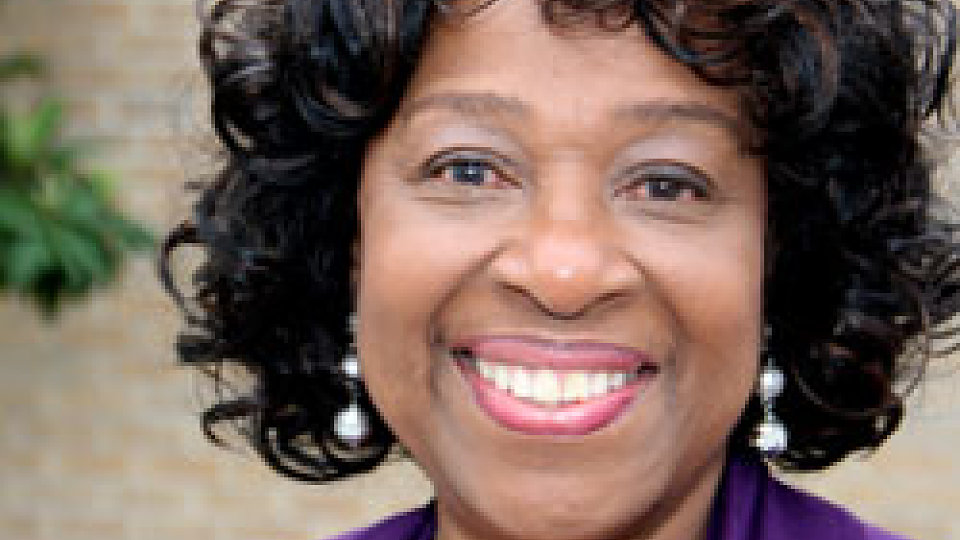Family Hope Center Houston/Aldine Series: The Community
Almost 24 years ago, Sylvia Bolling looked around and saw a need. In fact, lots of them. The community where the public school worker was raising her two children needed help. So she quit her job, loaded her car with supplies, and founded what is now a community icon: The Family Hope Center Houston/Aldine.
At its beginning, the ministry was known as Aldine YOUTH and centered on holistically helping families in the area just north of downtown Houston. After affiliating with Buckner three years ago, she said the needs – and the vision – remain the same.
“Before this center was established, there were no social services,” she said. “There was nothing for the kids to do after school, in the summer or weekends. And so what we did with God’s support is establish a one-stop center that made accessible things that our families needed in order to transform their lives.”
Transformation was needed, she explained, because of the barriers faced by the community. “Some of the barriers that are faced by our children and families include a language barrier. It includes poverty. That is the main barrier. Almost 90 percent of the youth are on free or reduced lunch. It includes isolation and a lot of things that poverty brings such as school dropout, teen pregnancy and grandparents raising grandchildren -- a lot of things that really our families don’t know where the solution is. Solutions are what the Family Hope Center Houston/Aldine has brought to this community.”
In addition to practical solutions to the area’s issues, Bolling said the center adds a dimension of “hope and love” to every part of its ministry. “If Family Hope Center Houston/Aldine has a heart of love, love conquers a lot of things. We love them, we accept them where they are and then move them toward God’s purpose for their lives.”
Hope Center Program Director Shawna Roy, Bolling’s daughter, has worked with the ministry alongside her mother almost from the beginning. She said she sees firsthand the community’s needs and how it impacts the community one family at a time.
“You would be surprised with what a lot of our families deal with, what a lot of our children deal with,” Roy said, “and then the world expects them to deal with things at home and go to school, behave, and perform like everyone else.
“Some of our children live without electricity and that’s just their way of life. I remember one of the hurricanes and our electricity was off and when the kids came after school, one of the little girl said, ‘Well, what's the big deal? We don’t ever have lights at our house.’
“These people really are in poverty. When we interview families for Christmas and ask them some of our needs, it’s really hard to hear some of the moms say, ‘We don’t need toys. We need silverware. I don’t have silverware to serve my children food.’ That's why we're here: To help, to change their situation. Whatever they need, whatever their struggle is, that is why the Family Hope Center exists.”
Among those who help find solutions for community needs is Hope Center Case Coordinator Sheri Russell, who answers those needs one family at a time, even if their situation is desperate and they’re reluctant to ask for help.
Russell is currently working with a woman who came to the center several times before she would open up to Russell about her issues. But when she did, Russell was compelled to help.
“She asked me about different community resources for places to stay, resources for food, resources for getting off the street and getting cleaned up,” Russell said. “Through our conversations, I found that she was staying with a boyfriend who was mentally and physically violent toward her and she wished to get away from that situation.
“For her, that meant leaving everything which included the income that came with her household. She ended up on the street. For a short period, she was on the street with her kids until CPS then removed her kids.”
The woman came more often, became involved in the center, and made use of its offerings, including Russell’s help.
“At this point, we have looked at transitional centers and some shelters. She volunteers in our pantries and she finds her a nice outfit and she gets cleaned up and she goes to visit her kids. She is still living on the street, and she still comes here every day on a daily basis.
“So we talk about how to meet her goals. Who are the people you need to speak to to get those goals met and where do you go to get that,” said Russell. “We have talked about the end result and we have come to a conclusion that the big decision she needs to make is going to the shelter that is connected with transitional housing. That is her next step to getting her life back on track to get her kids back.”






Add a Comment